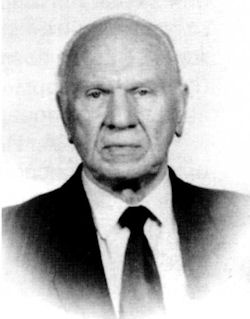A.I.Savin - Ocean Reconnaissance
 In the following years, a number of unique space systems were created under the leadership of Anatoly Ivanovich. Fundamental scientific studies of the atmosphere, ocean, land and near-Earth space, and research work in optoelectronics, computer science, radio physics, radio engineering and radio electronics ensured the creation of the physical foundations of the theoretical basis for the development of systems for detecting and identifying low-contrast low-dimensional and spatially extended objects in the background. various formations in the atmosphere, the ocean, on land and in near-Earth space. A special place in these works was devoted to research in the field of computer science and image processing, as well as the hydrodynamics of the fields of the seas and oceans, and the development of models of background-target environments. The works of A.I. Savina and his school on remote sensing for the purpose of global and regional environmental monitoring of the Earth.
In the following years, a number of unique space systems were created under the leadership of Anatoly Ivanovich. Fundamental scientific studies of the atmosphere, ocean, land and near-Earth space, and research work in optoelectronics, computer science, radio physics, radio engineering and radio electronics ensured the creation of the physical foundations of the theoretical basis for the development of systems for detecting and identifying low-contrast low-dimensional and spatially extended objects in the background. various formations in the atmosphere, the ocean, on land and in near-Earth space. A special place in these works was devoted to research in the field of computer science and image processing, as well as the hydrodynamics of the fields of the seas and oceans, and the development of models of background-target environments. The works of A.I. Savina and his school on remote sensing for the purpose of global and regional environmental monitoring of the Earth.
In the late 1950s, a number of models of anti-ship missile weapons, including self-guided cruise missiles with a long range, were created in OKB-52. At the same time, these missiles required appropriate information support for launching to the over-the-horizon range. It was decided to use spacecraft equipped for all-weather monitoring of surface ships, which was developed by OKB-41 under the guidance of A.I. Savina. Work on the creation of ground-based radio-electronic complexes of this system and onboard controls of the spacecraft were successfully completed.
In 1973, the team of OKB-41 under the leadership of A.I. Savina was removed from the Almaz Central Research Institute. On its basis, the Kometa Central Research Institute was created, whose general designer and general director was Anatoly Ivanovich Savin for 27 years. The Central Scientific Research Institute also included the Mospribor plant and SKB-39.
Mikoyan's OKB-1 worked on Spiral, Kozlov's OKB-1 Branch 3 focused on reconnaissance, Savin's OKB-41 worked on active radar surveillance satellites US-A or RORSAT (Radar Ocean Reconnaissance Satellite) and the system known as US-P or EORSAT (Electronic Ocean Reconnaissance Satellite). This system comprises two families of satellites: EORSAT equipped with passive listening systems, and RORSAT. These operated in pairs at an altitude of 260 km in the case of RORSAT and 440 km for EORSAT, which had a distinctly longer lifespan (180 days as against 90-120 days). According to Secretary of Defense, Harold Brown, the Russians would thus be able to inform their Backfire bombers equipped with Cruise missiles as to the American ships to be attacked. The sea-to-sea SSN-12 missiles can be used against very distant objectives (the missileís range is 550 km) on the basis of information transmitted to the vessel by an observation satellite.
The American and Soviet navies both came to rely on space-based surveillance of the oceans to identify the location of each otherís fleets for both strategic and tactical purposes. Significantly outgunned by the U.S. Navy, the Soviet Union relied far more on submarines and ground-based aircraft for its naval goals and developed naval surveillance satellites to augment these capabilities.
Nuclear power was used almost exclusively for interplanetary missions (US missions). The form is almost always a Radioisotope Thermoelectric Generator (used on Voyager) as opposed to a thermal-cycle fission system (similar to a nuclear reactor on Earth). However, the Soviet Union employed a small-scale thermionic nuclear reactor on the Radar Ocean Reconnaissance Satellite (RORSAT). Cosmos 954 failed to boost to a safe orbit at the end of itís mission life, decayed in the Earthís atmosphere and landed in Broken Knife, Northwest Territories, Canada in 1978 spreading nuclear material over several miles of the Canadian landscape.
Following the incident with Cosmos-954, from which debris was scattered in Canada in 1978, and Cosmos-1042 (December 1982), the program was interrupted. In August 1985 it started again, with the launching at a few daysí interval of Cosmos-1670 and Cosmos-1677. Like optical satellites, RORSAT and EORSAT are vulnerable to direct attack by anti-satellite weapons because of their low orbit.
Jon Solomon noted "RORSAT suffered from the same contact classification challenges that inherently plague any radar. In fact, RORSATís shortcomings were even worse: its sensitivity was apparently so poor that it could only detect large ships, and even then not reliably when the area it was searching contained inclement weather. EORSAT was completely dependent upon ships complacently radiating telltale radiofrequency emissions, and as a result could not compensate for RORSAT. Lastly, as neither RORSAT nor EORSAT could report their data in Ďreal time,í their contact pictures generally suffered from tactically-significant lateness."
|
NEWSLETTER
|
| Join the GlobalSecurity.org mailing list |
|
|
|

